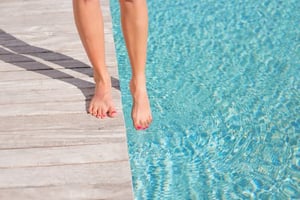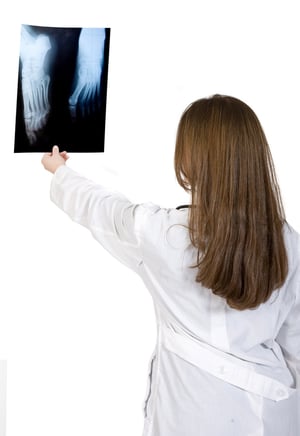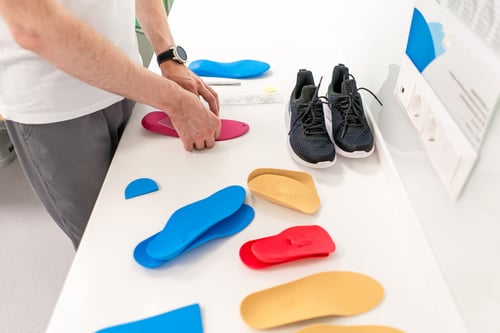
Everyone pronates. Pronation is a natural part of walking. If you take the time to be mindful of each step you take you'll notice that your ankle and arch team up to allow your foot to roll in slightly before passing the torch to the ball of the foot and big toe to complete the step. This slight ankle/arch roll inward is what we refer to when we talk about pronation.
Problems can arise if a person overpronates, and as any podiatrist will tell you, overpronation is far from rare. The culprits are lax ankle ligaments that fail to support the ankle, forcing the arch of the foot to flatten and as it does, take the steps a bit further inward than is natural. This inward tilt can create a cascade of problems as the leg and hip try to compensate.
Overpronation in a child of one or two is nothing to be concerned about. However, if the foot alignment fails to self-correct as he/she becomes independently mobile, you may want to take steps to help.
How To Determine Overpronation
The easiest way to validate your concerns about your child's possible overpronation is to take a look at their shoes. Similar to how uneven tire wear can be a sign that a vehicle's wheels are out of alignment, asymmetrical sole wear can be a red flag warning of over pronation. The shoe soles of overpronators will show extensive wear toward the outer edges of the heel and along the inner edge from the ball or the foot to the inside of the big toe. A well-worn shoe may even tilt inward when placed on a flat surface.
You can also use the wet footprint test, a test your child may actually enjoy. Simply have her/him dip their bare feet into a tub or pail of water, then walk over a piece of dry newspaper or large brown paper bag. If the footprint displays the entire sole rather than leaving a dry space where the arch should be, it shows how the arch stretches to the point of flattening rather than tensing up to absorb the shock of walking.
Possible Problems Resulting from Overpronation
If allowed to go uncorrected overpronation can have a domino effect extending from the foot and ankle up to the hip. For this reason, if a parent thinks their child overpronates it's recommended that he or she take the child to a podiatrist who can confirm their suspicion. To ignore excessive pronation can result in any of the following problems sooner or later in their lives.
- Fallen arches (flat feet)
- Heel and/or ankle pain
- Arch pain (plantar fasciitis)
- Bunions
- Hammertoes
- Arthritis in the foot
How a Podiatrist Can Help Overpronators
After observing your child walk and perhaps ask questions about whether she trips a lot or has trouble keeping up with other children, a podiatrist will also ask you whether there is any family history of overpronation. He or she will then conduct a musculoskeletal examination including a detailed gait analysis to rule out bone or muscle deformities.
The next steps may be:
- Recommending something as simple as changing to a more structured style of shoes.
- Fitting the child for a custom-made pair of orthotics designed to lift the arches, straighten the foot alignment, allowing the joints to work together, so the foot can function optimally.
- More severe cases of overpronation may call for ankle braces to give additional support.
Next Stop - Physical Therapy (PT)
In addition, most podiatrists recommend the child visit a pediatric physical therapist. They will begin by putting the child through exercises meant to strengthen the small muscles of the foot, then go on to work on stabilizing leg muscles to help them function more efficiently. If your child has trouble walking on uneven surfaces or going up or down stairs, they will work on balance skills together. The important thing is that the child not dread physical therapy. So while a general physical therapist will do a good job, a pediatric physical therapist can make PT fun!






